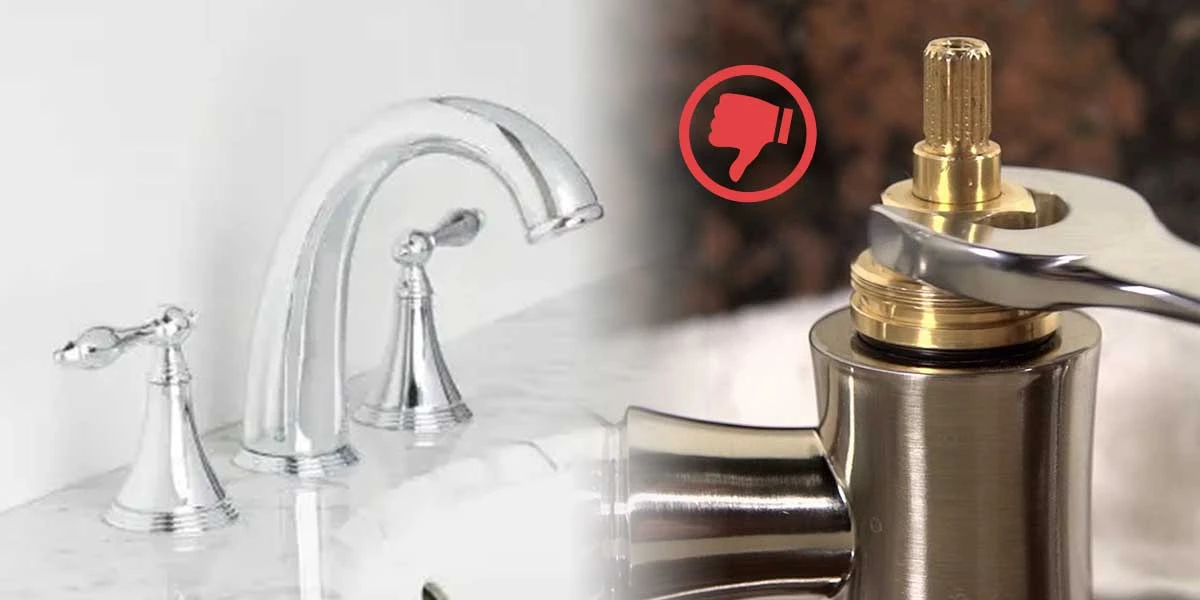Have you ever thought about why there is a cartridge in your faucet? The primary reason is to regulate the flow of water when the faucet handle is on. In simple words, it lets you control the amount of water flowing through the faucet.
The average life expectancy of a faucet cartridge is about 10-15 years. However, that doesn’t mean the cartridge cannot fail before it.
An early failure in the faucet cartridge can be a result of rough usage. Sometimes a blockage inside the faucet cartridge can also result in cartridge failure. In cases like this, your faucet will start showing some signs.
How to tell if a faucet cartridge is bad or faulty?
A faulty cartridge usually shows signs of leakage. If you’re noticing dripping water from the spout or faucet/sink base, then probably the faucet cartridge has gone bad. In addition, if the running water is showing inconsistency in its temperature, then also a possibility of cartridge failure.
Here we’ll explore more on how to tell if a faucet cartridge has gone faulty and an effective solution to this issue. Let’s jump right into it.
5 Signs to Tell If A Faucet Cartridge Is Bad
Leakage from Spout
The spout is the part of a faucet from where the water flows out. If you notice dripping water from the spout despite the handle is off, then there are chances that your faucet cartridge is defective. Once I felt like tightening the handle too much to stop the dripping water. Later, I came to know it was some issue with the faucet cartridge.
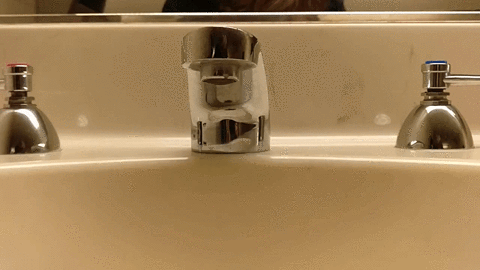
Here are a few signs that a leaky spout indicates the possibility of cartridge failure:
- Dripping water even if the handle is turned off.
- Tightening the handle too much to stop dripping water.
- Keeping the handle in a specific position to stop water’s flow.
Most of the time, it becomes difficult for our eyes to detect a leaky spout. It happens mostly when the water is dripping as slow as a snail. You can consider this as an initial stage of a cartridge failure. Thankfully, you can test this by an experiment.
Here’s an experiment to check if your spout is leaking: Place a dry cup just below the faucet’s spout and leave it for 30 minutes. Then, come back to check if you have some water inside the cup. If found, then you can conclude that your faucet spout is leaking.
Leakage from Faucet’s Base
The faucet base is the area where the fixture meets the sink. If water is leaking from the faucet’s base, then most probably worn-out O-rings in cartridges might be causing it.
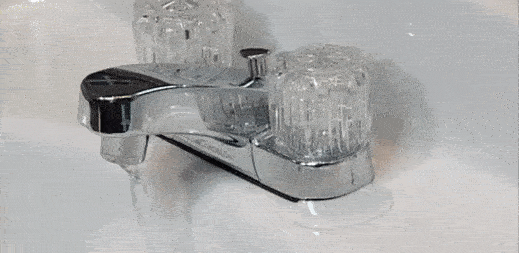
An O-ring in a cartridge helps to seal the gap between the faucet and cartridge as it can prevent water from leaking around.
In addition, this type of leak happens only when your faucet is under running condition. Therefore, the simple solution is to replace the cracked/worn O-ring with a new one.
Pro Tip: Replace O-rings in cartridges every 10 years to keep your faucet going.
Leakage Under the Sink
Under-sink leakage is worst of all. It tends to do a lot of damage if not taken any action as soon as possible. The possible damages include stained/slippery floors, structural damages, ruins walls/cabinets, etc. Well, How a cartridge is responsible for this?
To answer this, the most common reasons for under sink leakage are worn-out connections, a shift in plumbing lines, or corrosion in internal parts that can impact negatively on plumbing lines below the sink. Therefore, you must detect under sink leakage before it gets worse.
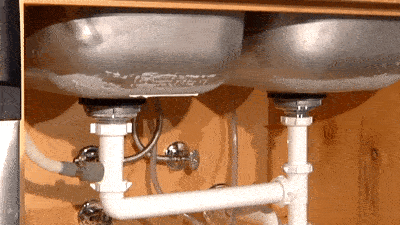
How to find the source of the under sink leakage? You can start by filling the sink with water, then watch under the sink as it drains. If you find any leakage around the drain pipe’s slip joints, tightening with hands will stop it. In the worst case, call professionals for help.
Inconsistency In Water Temperature
A double handle faucet consists of two handles for switching temperature. The right handle usually allows cold water to pour out while the left handle controls hot. As we know, cartridges control the flow of water; likewise, they also decide on the temperature.
Bad cartridges can result in inconsistency in water temperature. Imagine twisting the right handle in the hope of cold water, but it turns to pour out hot water. Guess, how risky it can be for your family? In such scenarios, you must replace the cartridge as quickly as possible.
Useful Source: How to Fix Inconsistent Water Temperature
Why Do A Faucet Cartridge Fail? (4 Common Reasons)
As said earlier, faucet cartridges are responsible to regulate the flow of water. The purpose of a cartridge is only fulfilled if other parts are working as they should be. There are several reasons why your cartridge might be failing to deliver its purpose.
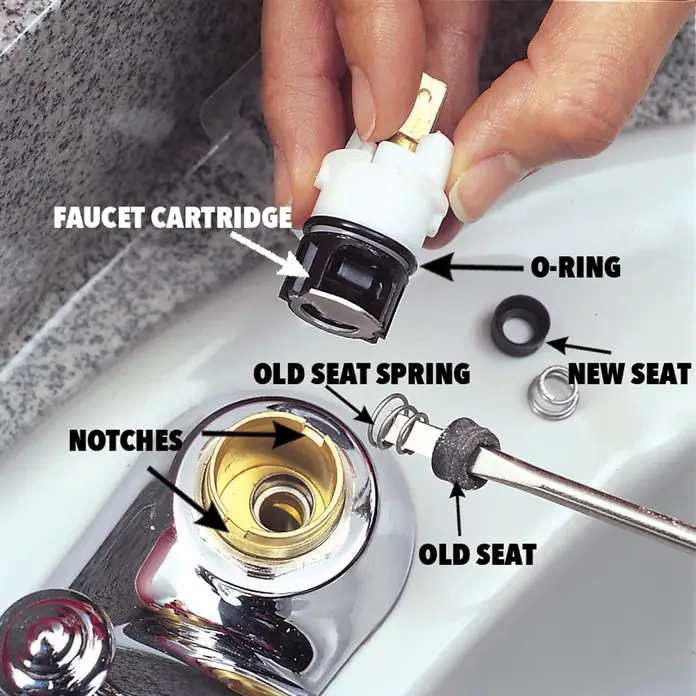
Here are the most common ones:
Worn O-Ring
O-ring is a torus-shaped rubber piece that seals the gap between the faucet and cartridge, preventing water from dripping around the spout (nozzle of the faucet).
Imagine what if your faucet O-ring wore out? You’ll notice the water continuously dripping from the faucet without any obstacles. Usually, O-ring in the faucet wears out over time and is common to see in cartridge faucets.
Solution: In such cases, there is no need to replace the cartridge. You can simply fix this by replacing the old O-ring with a new one.
Worn Washer
In a faucet, rubber washers (also known as valve seats) are present below the valve stem to seal the valve seat. It creates a barrier between the tap’s seat and the spout, preventing water leakage when the tap is off.
However, with time, friction can cause these washers to wear out, leading to leakage around the faucet. Plus, if you have installed the wrong size washer, then also your faucet can leak.
Solution: Washers can come in many shapes and sizes. Your best bet is to take the valve stem to the hardware store and get a matching washer.
See Also: How to Find the Correct Replacement Washer for a Faucet
Loose Parts
With time, parts inside the faucet can get loose sometimes. As a result, you will notice dripping water from the spout or water leaking from the faucet’s base.
In my case, I noticed the screw securing the faucet pipes had become loose over time, tightening it simply fixed my faucet leakage.
Solution: Take some time and figure out the location from where the water is coming out. If the outer part such as the base screw causing water leakage, then secure it using an appropriate tool. Also, look for parts inside the faucet handle, tighten them as well.
Broken Pipes
If the above possibilities are not the reasons why your cartridge is failing, then check for leakage in your faucet’s pipe system. Broken pipes must be fixed as soon as possible as they can cause water to flood inside your home. If not fixed, it can cause damages to the floor, wiring, ceiling, walls, and other structural components.
Solution: It is recommended to take the help of professionals in such situations.
FAQs: How to Tell If A Faucet Cartridge Is Bad
How long do faucet cartridges last?
The average life of faucet cartridges is about 10-15 years. If your cartridge fails early, then it could be a result of rough usage.
Can a faucet cartridge get clogged?
Faucet cartridges can get clogged over time. It happens due to minerals or debris present in water getting deposited in internal faucet parts such as cartridges & aerators. With time, it forms clog and slows down the flow of water.
Can a faucet cartridge be repaired?
You cannot repair a faucet cartridge if it is damaged physically or naturally. The best solution is to replace the faucet cartridge with a new matching model.

